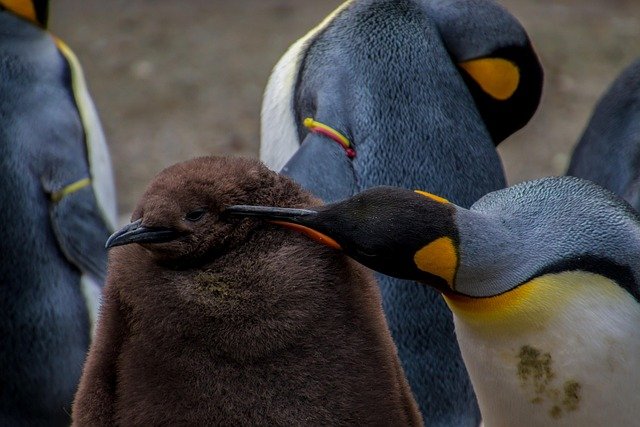**Title: "The Fascinating Social Structures of Penguin Colonies: Cooperation and Competition in the Antarctic

The Fascinating Social Structures of Penguin Colonies: Cooperation and Competition in the Antarctic
Penguins, the iconic flightless birds of the Southern Hemisphere, are not only remarkable for their unique adaptations to extreme environments but also for their complex social structures. In the icy realms of Antarctica, where survival is a daily challenge, penguin colonies exhibit fascinating behaviors that highlight both cooperation and competition.
Social Hierarchy and Group Dynamics
Penguin colonies are typically structured in a way that promotes social interaction and cohesion. These colonies can range from a few hundred to several thousand individuals, and within these groups, social hierarchies often emerge.
Dominance and Subordination: In many species, such as the Emperor and Adélie penguins, dominant individuals often have preferential access to resources like food and nesting sites. This hierarchy can influence mating opportunities and parental roles.
Flocking Behavior: Penguins are known for their flocking behavior, which not only provides protection from predators but also aids in thermoregulation. By huddling together, they conserve heat during the harsh Antarctic winters.
Cooperative Breeding and Parenting
One of the most striking aspects of penguin social structures is their cooperative breeding strategies. Many penguin species engage in shared parenting, where both parents take turns incubating eggs and feeding chicks.
Shared Responsibilities: In Emperor penguins, for instance, males endure the harshest conditions during incubation, while females go foraging. This division of labor ensures that both parents contribute to the survival of their offspring.
Chick Care: In some colonies, penguins will even help care for chicks that are not their own. This altruistic behavior can enhance the survival rates of young penguins, fostering a sense of community within the colony.
Competition for Resources
While cooperation is a hallmark of penguin social structures, competition is also prevalent. The struggle for food, nesting sites, and mates can lead to aggressive interactions.
Foraging Competition: Penguins often compete for access to the best foraging grounds. Species like the Gentoo penguin may engage in aggressive displays or confrontations to establish dominance over prime feeding areas.
Mating Displays: During the breeding season, male penguins may compete for female attention through elaborate courtship displays, vocalizations, and physical posturing. These competitive behaviors are crucial for attracting mates and ensuring reproductive success.
Conclusion
The social structures of penguin colonies are a remarkable blend of cooperation and competition, shaped by the demands of their harsh environment. Understanding these dynamics not only enriches our knowledge of penguin behavior but also highlights the intricate balance of social interactions in animal communities. As researchers continue to study these fascinating birds, we gain valuable insights into the complexities of life in one of the planet's most extreme habitats.
References
Feel free to share your thoughts or experiences with penguins in the comments below!
